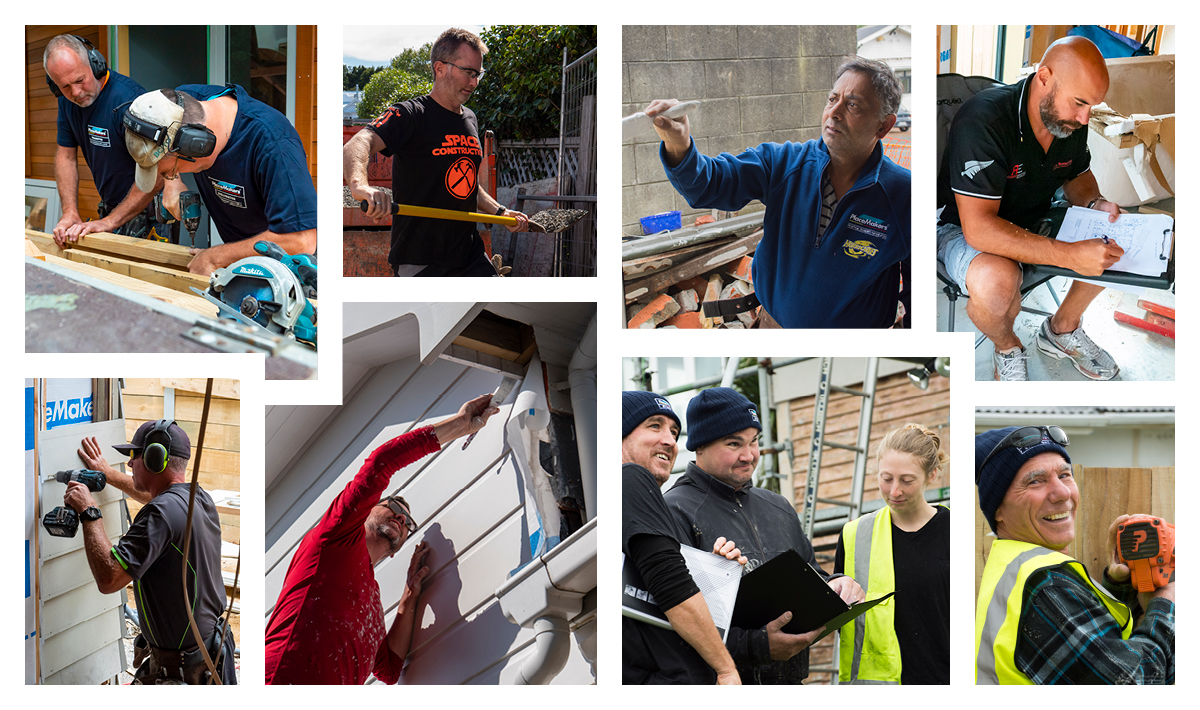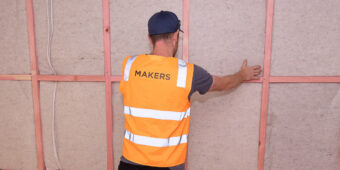Building System Legislative Reform – have your say!
18 Apr 2019, Feedback

MBIE is proposing major changes to New Zealand’s building laws to improve the quality of building work – these are the most significant reforms since the current Building Act was introduced in 2004
The building sector is vital to our social and economic success – it builds and maintains the places New Zealanders work and live. The sector helps deliver on government priorities like KiwiBuild, public housing and infrastructure. The building sector needs to deliver safe and durable buildings while being able to innovate as methods and practices evolve.
Working together
An efficient building regulatory system isn’t the sole responsibility of government. Everyone in the sector must work together to lift quality so things go right the first time and, if they do go wrong, there are fairer outcomes.
Why reforms are needed
The building sector faces a number of long-standing problems. These problems range from low productivity and inefficient practices and processes, to skills and labour shortages, to poor health and safety. We’ve talked to people across the sector about problems with how the regulatory system functions. Our conversations revealed three common themes:
▪ Roles and responsibilities are not clear.
▪ Information isn’t available when it’s needed.
▪ It’s difficult to hold people to account for the quality of their work.
What’s in the reform package?
These are the most significant reforms since the current Building Act was introduced in 2004. They affect people, products and practices across the sector. The proposals are summarised below. There are more details about these proposals in the full discussion paper and summaries of each part.
Building products and methods
▪ Clarify roles and responsibilities for building products and methods.
▪ Require manufacturers and suppliers to provide information about building products.
▪ Strengthen the framework for product certification.
▪ Make consenting easier for modern methods of construction including off-site manufacturing.
Occupational regulation
▪ Change the licensed building practitioners scheme to raise the competence standards and broaden the definition of restricted building work.
▪ Introduce a new licensing scheme for engineers and restrict who can carry out safety-critical engineering work.
▪ Remove exemptions that allow unlicensed people to carry out plumbing, gasfitting and drainlaying work.
Risk and liability
▪ Require a guarantee and insurance product for residential new builds and significant alterations, and allow homeowners to actively opt out of it.
▪ Leave the liability settings for building consent authorities unchanged.
Building levy
▪ Reduce the building levy from $2.01 including GST to $1.50 including GST (per $1,000).
▪ Standardise the building levy threshold at $20,444 including GST.
▪ Allow MBIE to spend funds raised by the building levy on broader stewardship of the building sector.
Offences, penalties and public notification
▪ Increase the maximum financial penalties.
▪ Set different maximum penalties for individuals and organisations.
▪ Extend the time enforcement agencies can lay a charge from six months to 12 months.
▪ Modify the definition of ‘publicly notify’ in section 7 of the Building Act.
To read the full Discussion paper, click HERE.
To fill in the online survey, click HERE.
HAVE YOUR SAY! SUBMISSIONS CLOSE ON 16 JUNE 2019
MBIE will use the information from the submissions to refine its proposals. The Minister for Building and Construction will then decide what changes to recommend to Cabinet.
Occupational regulation
Occupational regulation aims to protect the public from harm by ensuring services are performed with reasonable care and skill.
Six types of jobs in the building process are currently regulated: architects, electrical workers, engineering associates, engineers, building practitioners, and plumbers, gasfitters and drainlayers.
The licensed or registered members of these occupations make up about 64,000 of the estimated 241,700 people working in the building and construction sector. The remainder are still carrying out work that is regulated under the Building Act and general business law, and may be working under the supervision of someone who is licensed or registered.
Occupational regulation should ensure that:
▪ Regulation is proportionate to the risks to public safety.
▪ Practitioners who are registered or licensed are appropriately skilled and productive.
▪ Practitioners are held to account for carrying out substandard work.
The occupational regulatory system doesn’t capture all work in the building process that poses significant risk of harm to building users in the event of a building failure. Risks of harm can arise from the complexity of the building or the type of people who use it.
It is not always clear that people authorised to carry out restricted work have the necessary competence to do this work. There are also challenges holding people to account for substandard work or poor conduct.
Three occupational regulation schemes have the most pressing need for change:
▪ Licensed building practitioners
▪ Engineers
▪ Plumbers, gasfitters and drainlayers.
Licensed building practitioners – MBIE wants your feedback on two sets of proposals
Proposal 1
Broaden the definition of restricted building work (RBW) to include all residential and more complex non-residential building work. It would include:
▪ All residential building work, including simple houses and mixed use residential/commercial buildings and apartments,
▪ Commercial and communal buildings currently defined as importance level 3 and above, and importance level 2 buildings with a height of 12 metres or more or capacity over 200 persons.
Building importance levels are determined by risk to human life, the environment, economic cost and other risk factors in relation to its use.
The Licensed Building Practitioner (LBP) scheme protects building users from harm by ensuring that those carrying out or supervising work that is critical to the safety of the building are skilled and competent, that work is done right the first time, and that builders are held to account for substandard work or poor conduct.
Builders carrying out or supervising structural, weathertightness, or fire safety design work on commercial, mixed use buildings or high-rise apartments aren’t regulated by the LBP scheme and do not have to complete a competency assessment to show they have the right skills and knowledge.
The proposed changes to the LBP scheme will more proportionately manage risks to life safety and make sure that New Zealand’s building sector is competent and productive.
▪ High-rise buildings are more complex to build than simple houses and present higher risk of things going wrong in the building process. The impact of building failure is often much greater due to the higher number of potential building occupants. The rates of inspection failure highlight that commercial building work risk management practices are no better than those for residential building work. One third of commercial building inspections fail.
▪ Importance level 3 buildings include educational, day care and health care facilities. These buildings pose greater risks to building occupants in the event of building failure because they may house large numbers of people or vulnerable occupants (e.g. older people, children and people who are disabled or have poor health).
How it would work
Increasing the coverage of the scheme means that more people will need to become an LBP or be supervised by one to do restricted work. People seeking to become an LBP will need to demonstrate they have the necessary skills and competence to do the work.
Developers, building owners and building consent authorities (BCAs) will have more assurance that the work has been carried out or supervised by technically competent building practitioners with reasonable care and skill, and that the practitioners will be held to account for poor quality building work or poor conduct.
There will be a transition period to introduce the expanded definition of RBW. MBIE proposes a two-year timeframe to introduce the expansion of RBW. The forecasted increase in building activity combined with a broader definition of RBW will increase demand on the existing pool of LBPs – MBIE’s estimate is between 8,000 and 12,000.
Tell us what you think
What are your views on the proposed expanded definition of RBW and its effectiveness for managing risk to public safety and protecting vulnerable owners and occupants?
Do you agree with the proposed threshold for the definition of RBW?
What do you think are the impacts of the proposed expansion of RBW on builders, building companies, building owners and occupants?
Proposal 2
Raise the competence standard for LBPs to enter and remain in the LBP scheme.
This includes proposals to:
▪ Raise the technical competence standard for LBPs.
▪ Introduce a tiered licensing system for LBPs to establish a progression pathway, including a specific licence for supervision.
▪ Simplify the licence class categories.
▪ Introduce behavioural competence requirements for LBPs, including a fit and proper person requirement and a Code of Ethics.
▪ Reduce the frequency of licensing renewal.
MBIE proposes to raise the competence standards required of LBPs in response to stakeholder concerns that the current standards are too low. We want to ensure that those who are licensed to undertake RBW have the right level of competence and are held accountable for substandard work.
Higher technical competence and new behavioural competence requirements would provide confidence for developers, building owners and BCAs that the practitioner not only has the technical skills for the job, but can also be expected to perform their job with integrity. Currently, the LBP scheme does not have the full range of tools it needs to hold LBPs to account.
Licence classes need to be changed to address supervision and site management issues. Currently, an LBP can supervise without any supervision experience or training. Supervision of unlicensed builders is not working well and the licence classes do not recognise that different skills are required for supervision. The licence classes overall do not clearly signal areas and levels of competence to others in the system and are overly complex, so builders are required to get multiple licences.
Tell us what you think
What are your views on the proposals to raise technical competence standards and introduce behavioural competence standards, and what you think the impacts on the building sector are?
What do you think about the proposed supervision licence and proposed redesign of the licence classes?
HAVE YOUR SAY! SUBMISSIONS CLOSE ON 16 JUNE 2019
MBIE will use the information from the submissions to refine its proposals. The Minister for Building and Construction will then decide what changes to recommend to Cabinet.
Register to earn LBP Points Sign in



